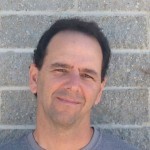The Basin School District last month purchased 87 acres to build an outdoor education center that will benefit not only Idaho City students, but all Idaho kids and adult outdoor enthusiasts.
It took more than 16 years for Basin to acquire the federal land for just $866 (about $10 an acre) through the Recreation and Public Purposes Act, whereby nonprofits can gain title to federal lands that are of no use to the government, but expensive to maintain and administer.
“We’re all kind of giddy now after 16 years to get this thing off the ground,” said superintendent John McFarlane.

The lands typically acquired through this act are isolated tracts — essentially islands — that are made available to entities that want to use them to enhance the resource for the public’s benefit.
These 87 acres are adjacent to Basin’s football field.
In 1999, the Basin School District established a committee to look into the possibility of acquiring the land for a future school site. But over the years, it morphed from a possible school site to an outdoor educational and recreational resource that could be utilized by Basin students, students from other schools, college students and the community at large.
When McFarlane became the superintendent in 2008, a land grab became a priority. He reformed the committee to include staff, board members, community members and students. By 2011, the district was granted a lease of the land and last month its purchase. The land includes a seasonal stream, year-round stream, large riparian area, a densely forested hillside and more than 20 acres of mine tailings.
The project is now called the Idaho Center for Outdoor Education (ICOE) and the district has already spent about $40,000 in grant money developing it.
“Much of the work done thus far has been to rehabilitate the site after decades of abuse,” said McFarlane. “Providing we continue to follow our approved plan and enhance the resource, it will remain property of the Basin School District.”
Staff, students and community members have already purchased science equipment, installed a bathroom and excavated the only ADA accessible nature trail on the Boise National Forest. Shop students built and installed picnic tables.
Future development will include:
- A covered pavilion so classes can be held through the winter.
- Installation of wireless sensors and cameras so data can be collected remotely.
- An indoor classroom and science lab.
- A boardwalk into the riparian area.
- An observatory on the top of the hill for a view of Idaho City.
- A footbridge, trail markers and maintenance shed.
- Archery range.
- Bunkhouses and a mess hall.
- Guest cabins and a observatory yurt available for rent.
“Many of those will be built by our shop class,” McFarlane said. “We were just awarded a grant to build a disc golf course on the mine tailings since it so disturbed and of not much recreational use.”
Students have pulled noxious weeds and walked the land to pick up decades of trash. But they also have enjoyed its special offerings. Art students were drawing the mountainous vistas this week while others experimented with Dutch-oven cooking and built survival shelters.
“The whole school was up there today,” McFarlane said on Tuesday.
Eventually, McFarlane would like to see the ICOE be available to all school districts to use for special classes that bring science and outdoor recreation to life for kids. Basin staff will build “science kits” so visiting schools will have curriculum material when they get there, to study things like water, air and land quality.

The district also plans to share the facility with the community. Recreationist can rent facilities to camp, snowshoe, cross country ski or host archery events.
“Eventually, we’d like the land to be self-supporting so we’re creating its own revenue stream,” McFarlane said.
The ICOE’s most significant problem today is it lacks wireless capacity — Idaho City doesn’t have cell service.
The final phase requires a partner/donor to build a classroom and science lab for a year-round facility.
“I’d love to be able to partner with someone who has a vested interest in science and the environment,” said McFarlane. “With science education being so big, our timing is perfect.”
